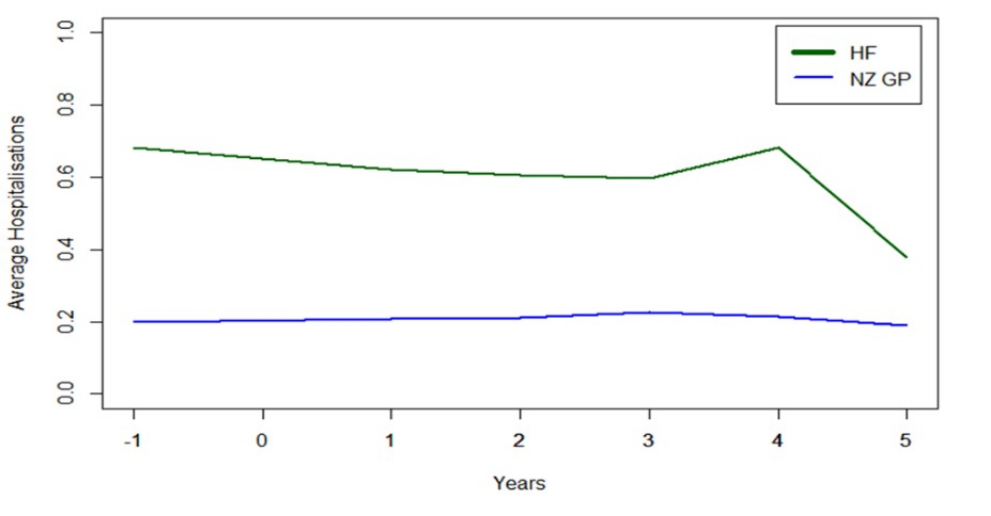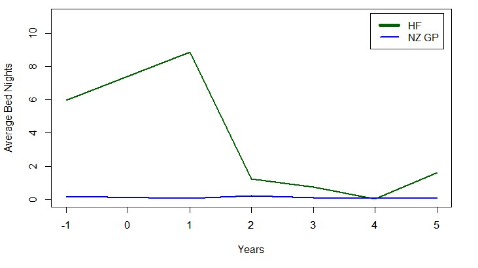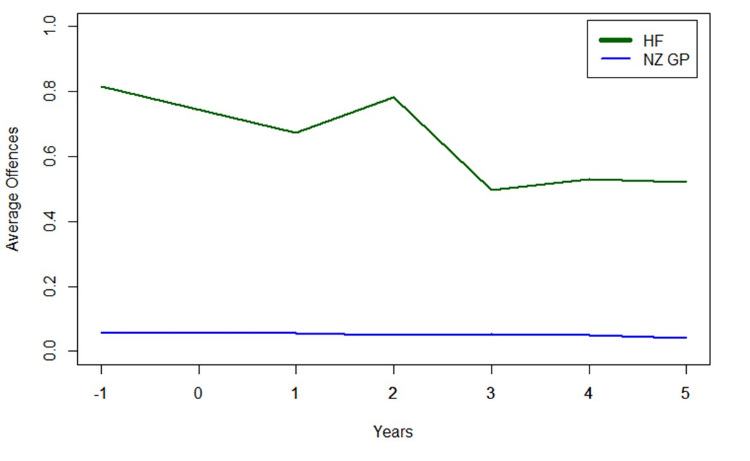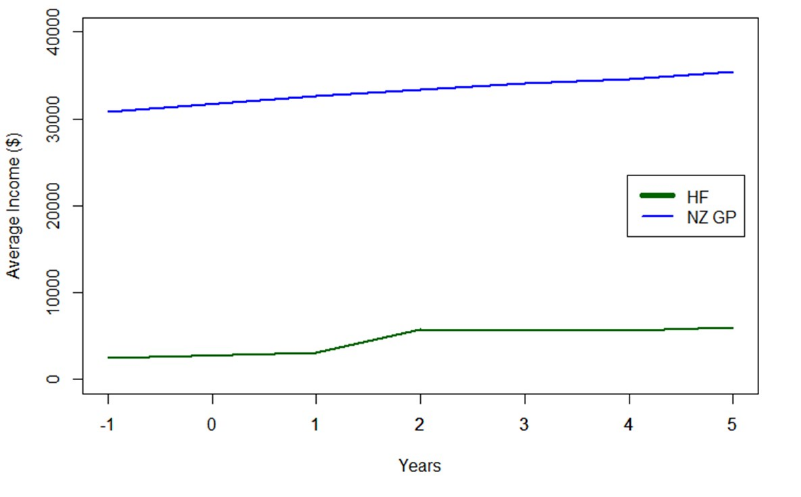A house first, and then ongoing specialised support: this key combination has led to the dramatic and continuing improvement in the wellbeing of people experiencing long-term homelessness who were housed by The People’s Project.
Newly published research about a cohort of The People’s Project (TPP) clients found significantly improved mental and physical health in the fifth year after this group was first housed. There were also fewer interactions with Police and courts, and an increase in incomes.
These results have just been published in The International Journal on Homelessness. Researchers from Ōtākou Whakaihu Waka ki Pōneke – The University of Otago Wellington, in partnership with researchers from The University of Waikato and Te Herenga Waka Victoria University of Wellington, and The People’s Project, used anonymised data to compare indicators for the cohort, such as health, justice, and income, from the year before being housed to five years after.
This group experienced significant ongoing positive effects, including:
- 44% drop in hospitalisations
- 63% drop in in-patient mental health bed-nights
- 73% drop in residential mental health bed-nights
- 36% drop in police offences
- 43% drop in criminal charges
- And a rise in income from both benefits and paid work
Those in the study were supported into housing between 2014 and 2017 by The People’s Project, based in Kirikiriroa-Hamilton, which focuses on providing permanent housing and specialised support without preconditions.
The Findings
Better Physical and Mental Health: In the five years since being housed, people had fewer interactions with health services, particularly for more intensive mental health services and hospitalisations. Outpatient events – that is, medical care that generally covers ongoing care – dropped to a lesser degree. The number of prescriptions filled rose slightly.
These health results indicate that serious and emergency health service use has lessened considerably, and that ongoing healthcare, such as outpatient and pharmaceutical treatment, is improving. This mirrors experience overseas showing that stable and secure housing, with wraparound support, means that people can better access routine health care.
Hospitalisations in Housing First and NZ General Population

This graph shows that after housing, hospitalisations declined for the HF group, with a sharper drop in year five, after a very small rise in year four.
Mental Health Residential Bed Nights in Housing First and NZ General Population

This graph demonstrates high mental health interactions before housing and getting ongoing, specialised support. This declined sharply in the second year after being housed and remains low five years on. Having permanent housing with appropriate support enables people to avoid mental health crises.
Fewer engagements with the justice system: Interactions dropped across police offences, criminal charges, and corrections events, such as time in prison or on probation. Police offenses and criminal charges were both significantly lower by the fifth year.
Reported victimisations have risen. This increase may be because, with the support of TPP, people felt more empowered to report being the victim of a crime.
Police Offences and Housing First and NZ General Population

Police offences five years post-housing are well below those committed the year before being housed.
Improved Income: Income has significantly improved, from both paid employment and benefits. People are spending more time in paid employment and less time on benefits. Despite this increase, compared to the general population, incomes are still very low.
People had a small lift in incomes after being housed, and a sharper rise in the second year. That is maintained through to five years. This could reflect an immediate rise in benefits, and a subsequent increase in paid employment after people’s mental health and wellbeing improved.
Income Received in Housing First and NZ General Population
WHAT THIS MEANS
These results demonstrate how engagement with The People’s Project led to better and ongoing wellbeing and quality of life for this group five years after being housed. But, as the graphs demonstrate, there is still a difference between results for the TPP cohort and the general population.
The People’s Project General Manager Kerry Hawkes says that being housed is just the first step for people who have experienced homelessness.
“The pathways into homelessness are varied and complex. We know many of the people we work with have experienced significant trauma. Once someone is in secure housing they can more easily deal with other challenges in their lives with specialised support for as long as they need it. At TPP, that might look like supporting a client to see a GP for an ongoing health condition such as diabetes, or to find a drug or alcohol programme, or to sit their driver’s licence. That continued support means people’s health and wellbeing improve, and they can begin to set goals, such as getting a job. It is far better for individuals, and our communities, when everyone has opportunities to thrive and belong.”
BACKGROUND
How did we get these figures? The data were analysed by researchers from He Kāinga Oranga/Housing and Health Research Programme, which is part of the Department of Public Health at the University of Otago, Wellington.
They used the Integrated Data Infrastructure (IDI) – a large-scale database containing microdata about people in Aotearoa New Zealand – to see where 357 people used various services over five years. They then built a detailed overview of people’s interactions and outcomes, before and after being housed, looking at indicators of people’s physical and mental health, justice system interactions, income, and employment. The information is anonymised; individuals cannot be identified.
The results from the TPP cohort were compared to a subset of the general population in the same age range so researchers could identify trends specific to the HF group, versus what was happening in the general population.
How does Housing First work? Housing First focuses on providing permanent housing and wraparound support without preconditions. Follow this link to read more about Housing First. Or watch this video from Sam Tsemberis, who developed the Housing First approach: Housing First: Sam Tsemberis at TEDxMosesBrownSchool (youtube.com)
What is The People’s Project? The People’s Project staff support those experiencing long-term homelessness into housing. Once in a permanent home, people are offered specialised support to help them sustain their tenancies. Read more about TPP here.
FURTHER INFORMATION:
- You can read the full academic article with the TPP five-year results here.
- Two-Year Post-Housing Outcomes for a Housing First Cohort in Aotearoa New Zealand
- Accessing Housing First – Te Tūāpapa Kura Kāinga – Ministry of Housing and Urban Development (hud.govt.nz)
For more information from The People’s Project, email media@thepeoplesproject.org.nz



